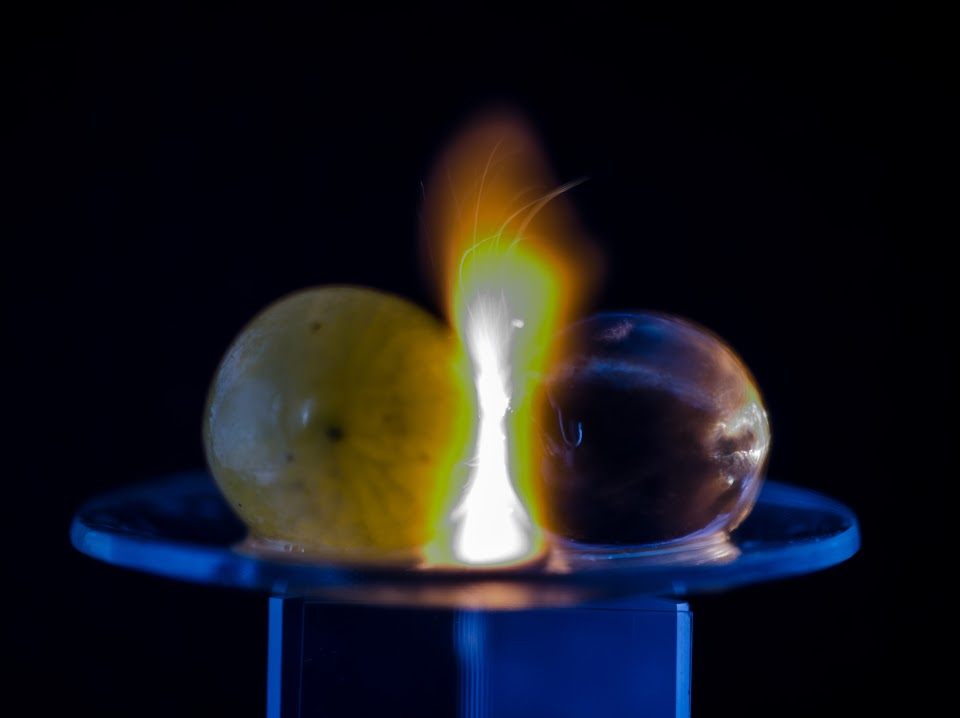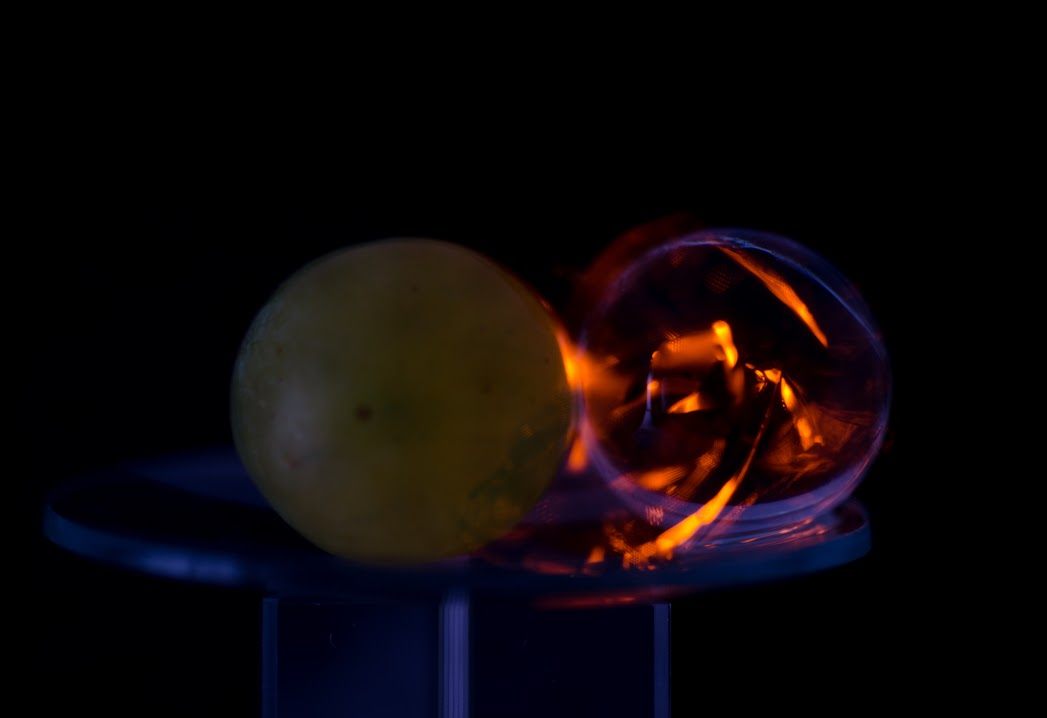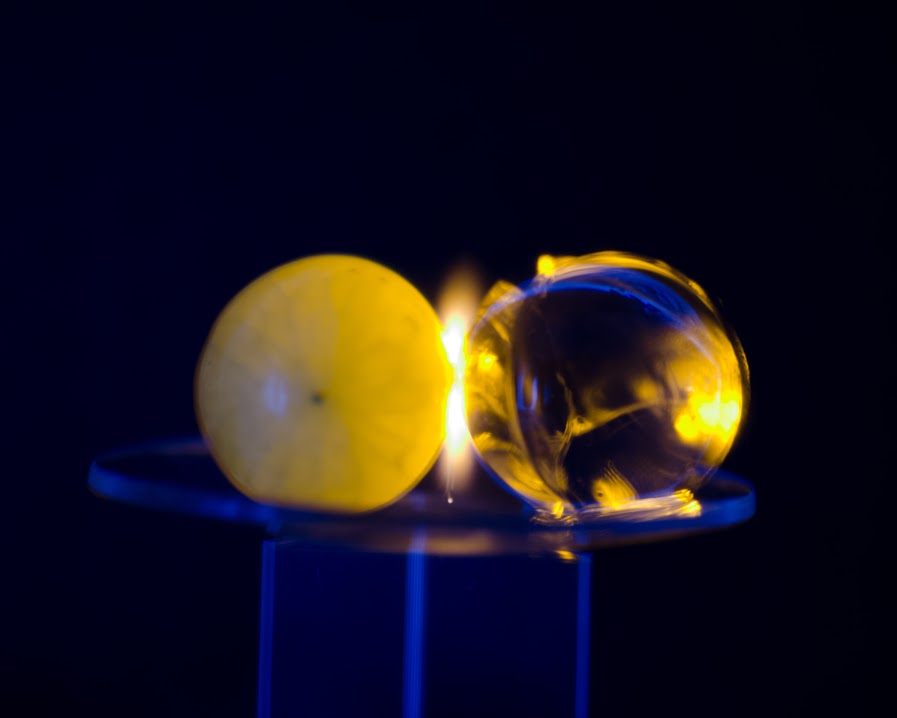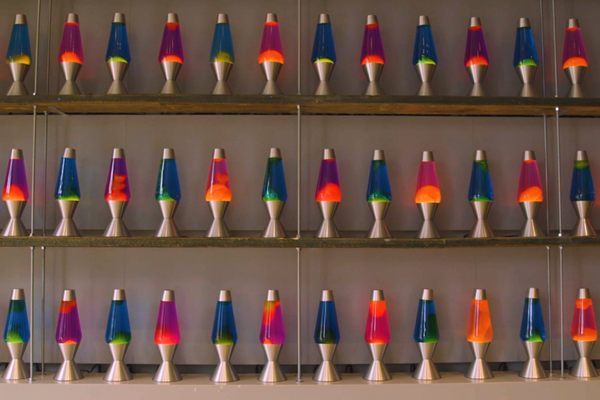These Physicists Finally Figured Out Why Microwaved Grapes Ignite
They’re raisin hell.

“It is a truth universally acknowledged that a pair of grape hemispheres exposed to intense microwave radiation will spark, igniting a plasma.”
The literature-inclined will notice that the above quote is a riff on the famous first line of Jane Austen’s Pride and Prejudice. But while sparks may fly between Elizabeth Bennett and Mr. Darcy, that’s nothing compared to the gouts of flame that ensue when two halves of a grape get close enough to touch while spinning inside a microwave. The above quote, in fact, is the first line of another great piece of literature, published yesterday by Proceedings of the National Academy of Sciences.

In the paper “Linking plasma formation in grapes to microwave resonances of aqueous dimers,” physicists Hamza K. Khattak, Pablo Bianucci, and Aaron D. Slepkova deployed many grapes and several microwaves in the name of science. Microwaving a nearly halved grape to watch the middle ignite is a popular, much-documented pastime, and for decades, this fiery parlor trick has been filmed and shared on the internet, where it mystified observers. The researchers set out to solve the mystery.
The leading theory was that when two halves of a grape are microwaved, the skin bridge connecting them acts as an antenna. The current that runs through the antenna heats up until a plasma forms. (Plasma, by the way, is an ionized gas that occurs when atoms are heated to the point that they release their electrons. Lightning is plasma, as is the sun.)

That turned out not to be the case, says study author Pablo Bianucci. A physicist at Concordia University, he’s been fielding calls all day from journalists interested in their fiery findings. His fellow researcher, Slepkova, first learned about the grape phenomenon on the internet in 1995, and they began studying it together as a side project in 2015. But it was only when undergraduate Khattak joined the team in 2017, says Biannuci, that the research “pushed forward very quickly.” Using rejiggered microwaves that allowed them to take photos, Slepkova and Khattak began microwaving grapes. According to the paper, the team used “thermal-imaging techniques and computer simulations” to examine what was happening.

It turned out that cutting the grapes wasn’t necessary, and neither was the bridge of skin. Even two whole peeled grapes side-by-side could induce fireworks. In fact, any grape-like objects, including blueberries, cherry tomatoes, quail eggs, and hydrogel water beads, do the same—a fact the researchers assiduously proved by microwaving each in turn.
This insight led to team to a new theory. In what Bianucci calls “a very lucky coincidence,” grapes are mostly made of water, which, as it happens, reduces the wavelengths of microwaves significantly. From around 12 centimeters in the air, they go to around one or two centimeters in water: a bit smaller than your average grape. “Microwaves can get trapped inside the grape,” says Bianucci. If a grape is microwaved by itself, a hotspot forms in its center from the trapped microwaves. But when two grapes are close enough, the waves can “hop” from one to the other. “This hopping results in a very strong electromagnectic field in between the grapes,” he says. When the field is strong enough to ionize the sodium and potassium ions in the grapes, it results in a tiny fireball.

The team’s discovery took several years and resulted in the deaths of 12 microwaves. (Even heavily modified microwaves “don’t like to run empty” save for two grapes.) This might seem like lighthearted research, and the paper acknowledges that “observing a piece of fruit burst into flames in a microwave oven is exciting and memorable.” But there are also real-world implications. As Bianucci explained to Physics World, these findings could come in handy in the field of nanophotonics (the study of light on a very small scale). Meanwhile, anyone interested in a free light show can microwave away (carefully), secure in the knowledge that we have a better idea of what’s happening in there.
Gastro Obscura covers the world’s most wondrous food and drink.
Sign up for our regular newsletter.






































Follow us on Twitter to get the latest on the world's hidden wonders.
Like us on Facebook to get the latest on the world's hidden wonders.
Follow us on Twitter Like us on Facebook